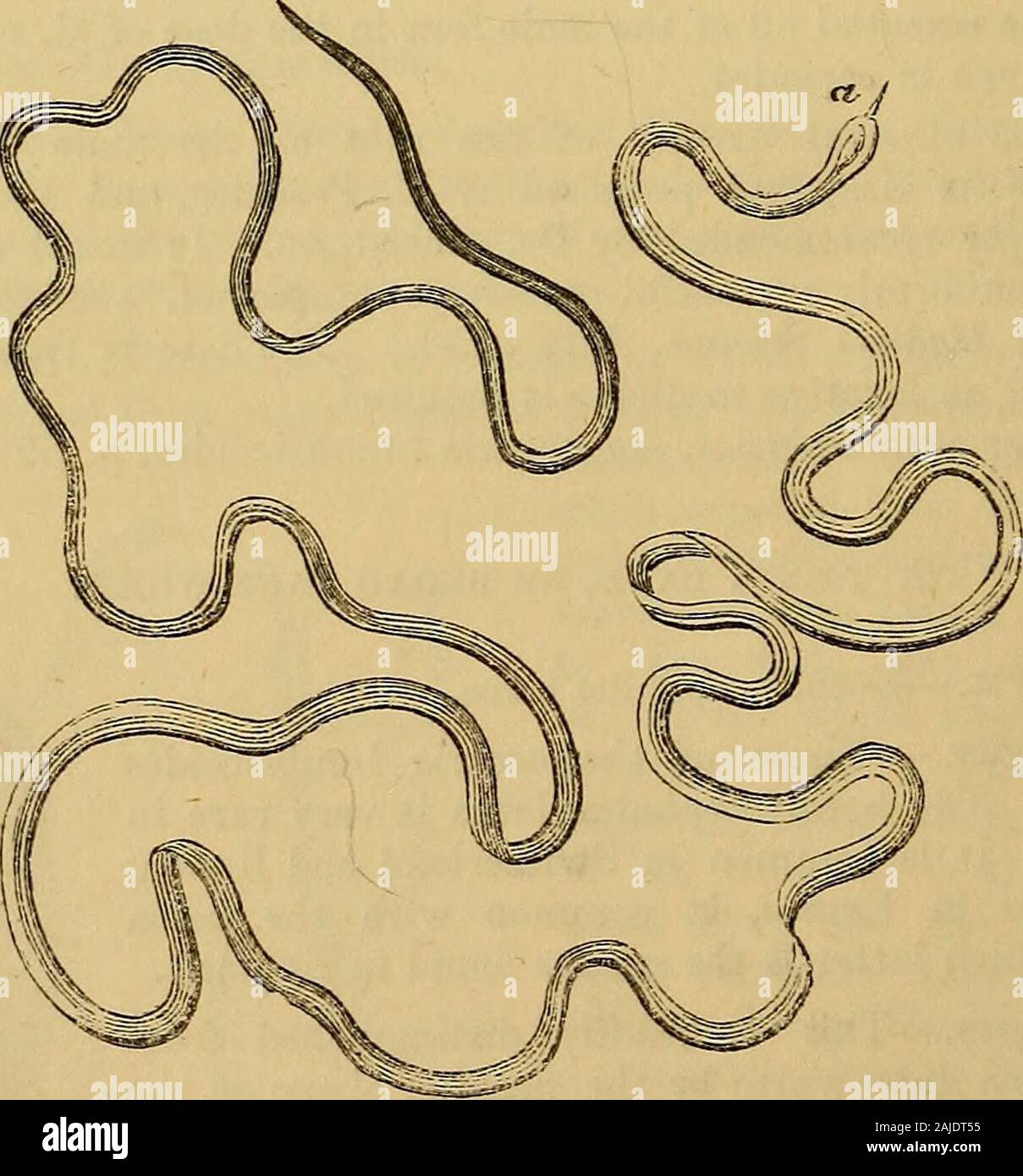Hooper's physician's vade mecum, or, A manual of the principles and practice of physic . 2 Q 2 596 FILARIA MEDINENSIS. FILARIA MEDINENSIS—GUINEA-WORM. Synonyms.—Dracunculus. Hair-worm. Symptoms.—An itching sensation is first felt in the skin of somepart of the upper or lower extremities ; most frequently in the lowerextremities, and especially in the feet. This itching sensation is soonfollowed by the appearance of a small vesicle, succeeded by an indolentinflamed swelling like a boil, which breaks and discharges its contents,revealing the head of the worm, which gradually protrudes throughthe

Image details
Contributor:
The Reading Room / Alamy Stock PhotoImage ID:
2AJDT55File size:
7.2 MB (274.7 KB Compressed download)Releases:
Model - no | Property - noDo I need a release?Dimensions:
1525 x 1639 px | 25.8 x 27.8 cm | 10.2 x 10.9 inches | 150dpiMore information:
This image is a public domain image, which means either that copyright has expired in the image or the copyright holder has waived their copyright. Alamy charges you a fee for access to the high resolution copy of the image.
This image could have imperfections as it’s either historical or reportage.
Hooper's physician's vade mecum, or, A manual of the principles and practice of physic . 2 Q 2 596 FILARIA MEDINENSIS. FILARIA MEDINENSIS—GUINEA-WORM. Synonyms.—Dracunculus. Hair-worm. Symptoms.—An itching sensation is first felt in the skin of somepart of the upper or lower extremities ; most frequently in the lowerextremities, and especially in the feet. This itching sensation is soonfollowed by the appearance of a small vesicle, succeeded by an indolentinflamed swelling like a boil, which breaks and discharges its contents, revealing the head of the worm, which gradually protrudes throughthe opening, so that it may easily be seized. Much skill and care isrequisite in order to withdraw the worm without breaking it. If theoperation is unsuccessful, acute inflammation and extensive suppura-tion supervene, and, in some cases, mortification. Diagnosis.—The length of the worm varies from half a foot totwelve feet. Its form and size are shown in a subjoined engraving of. a worm extracted from the heel of a negro, and preserved in the Mu-seum at Kings College. The form of the tail is seen at a. The headis of a darker colour than the body. Causes.—Predisposing. The tropical regions of Asia, Africa, andespecially Upper Egypt, Nubia, and Guinea.—Exciting. It is sup-posed that the worm in an embryo state pierces some exposed portionof the skin. OTHER PAEASITIC ANIMALS. 597 Treatment.—The worm requires to be very cautiously and pa-tiently extracted, being wound upon a small quill, or roll of cotton, as it protrudes. During the inflammatory stage, suppuration shouldbe promoted by the common bread-poultice. Prophylaxis.—When the disease prevails among bodies of men, the sick should be separated from the sound ; and scrupulous cleanli-ness should be insisted on. OTHER PARASITIC ANIMALS. In addition to the species described in the preceding pages, there areseveral varieties of parasitic animals, or entozoa, of which some areto be found in all, or in most